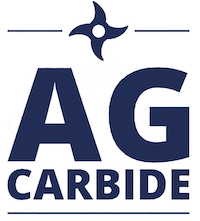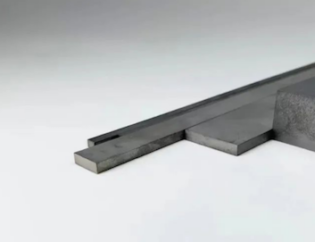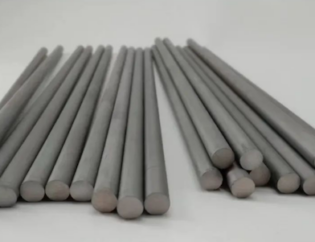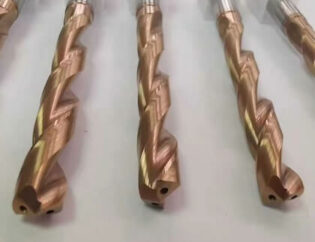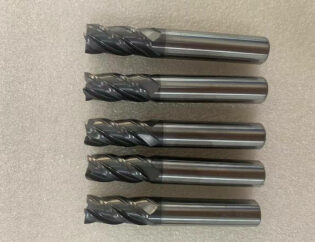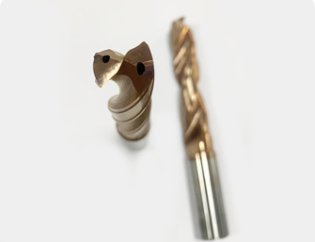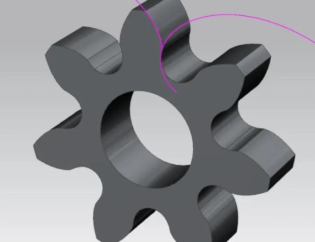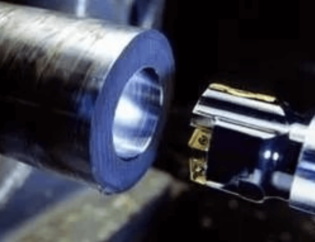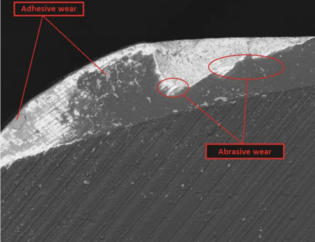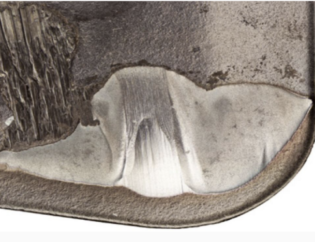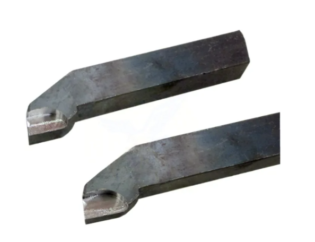What is cemented carbide? What are its characteristics?
Definition
cemented carbide is a composite material produced by powder metallurgy and composed of refractory metal compounds (hard phase) and bonding metals (bonding phase).
Features
High hardness and wear resistance;
High compressive strength (up to 6000mpa);
Good stability;
Brittle.
Ventajas
compared with tool steel, cemented carbide has the following advantages:
Greatly improve the tool life, several times to dozens of times;
The cutting speed and labor efficiency are improved;
The accuracy and smoothness of the workpiece are improved.
Composición, estructura y propiedades del carburo cementado
Composition
the main components of cemented carbide are WC, CO and tic, and the secondary components are tin, Ni, Mo, TAC, NBC, VC, Cr3C2, etc. Among them, WC (including TIC) accounts for more than 80% and co accounts for less than 20%. The proportion of other components is very small.


Structure
the normal structure of tungsten cobalt alloy is the two-phase structure of WC phase and co phase. The former is also called hard phase or α Phase, the latter is adhesive phase or β Phase. There are two normal structures of tungsten titanium cobalt alloys, one is (Ti, w) c+co two-phase structure, and the other is (Ti, w) + wc+co three-phase structure.
Performance
The main performance indicators of cemented carbide include density, bending strength, hardness, coercive force, cobalt magnetism, etc. Density is the most basic index of cemented carbide quality, and it is the basis of other properties. Hardness and bending strength are the two main mechanical properties of cemented carbide, which directly affect the application effect of the alloy. These three properties basically determine the comprehensive quality of cemented carbide, which is not only the evaluation index of products leaving the factory, but also the index that users pay most attention to, and an important basis for the rational selection of cemented carbide.
Funciones de varias sustancias de uso común en materiales de herramientas:
WC – wear resistant phase, the main component of tool material;
Co – ductile phase, with the increase of CO content, the strength and toughness of the alloy increase and the hardness decreases;
TiC – hard phase, with the increase of TiC content, the anti crater wear ability of the alloy increases, but the strength and toughness of the alloy decreases, and the brittleness of the alloy increases;
TAC, NBC – hard phase, which can significantly improve the high temperature performance and wear resistance of the alloy. The alloy with TAC and NBC has good versatility;
CRC, VC inhibitors, inhibit the growth of WC grains.
Classification of cemented carbide
According to different compositions, cemented carbide can be divided into five categories.
Tungsten carbide based cemented carbide
including WC Co, WC tic Co, WC TAC Co, WC tic tac (NBC) -co, etc. These alloys are mainly composed of WC.
Titanium carbide based or titanium carbonitride based cemented carbide
a kind of cemented carbide usually composed of tic or Ti (C, n) as the basic component and Ni Mo as the binder. Such as tic Mo Ni, tic WC TAC (NBC) -mo Ni, Ti (C, n) -mo Co Ni, etc.
Coating cemented carbide
deposit a layer of tic, tin, TiB2, ZrN, CrN, AI2O3, TiCN, B4C, SiC, BN, TiAIN, diamond and other substances on the alloy surface, so as to double the service performance of the tool.
Steel bonded cemented carbide
a kind of cemented carbide whose main component is steel and whose hard phase is tic or WC. Its remarkable feature is that it can be heat treated and machined. It is a kind of intermediate alloy between tool steel and cemented carbide.
Other cemented carbide
such as Cr3C2 based cemented carbide, which is composed of Cr3C2 as the main component and Ni or Ni-W as the binder. It is usually used as wear-resistant and corrosion-resistant parts.
Además, hay dos materiales de herramientas importantes. Uno son los materiales cerámicos, que incluyen alúmina (cerámica blanca), nitruro de silicio y cerámica Theron (si3n4/al2o3). El otro son los materiales superduros, el diamante policristalino (PCD) y el nitruro de boro cúbico policristalino PCBN.
Classification by purpose
El carburo cementado tiene una serie de excelentes propiedades y es ampliamente utilizado. Con el paso del tiempo, su uso se va ampliando. Los principales usos son los siguientes:
Herramientas de corte
El carburo cementado se puede utilizar como una variedad de herramientas de corte. El consumo de carburo cementado de herramientas de corte en China representa aproximadamente un tercio de la producción total de carburo cementado (alrededor de 3000 toneladas), de las cuales aproximadamente 78% se utilizan para herramientas de soldadura y aproximadamente 22% se utilizan para herramientas indexables. El carburo cementado utilizado para herramientas de control numérico solo representa alrededor de 20% del carburo cementado utilizado para herramientas intercambiables. Además, hay herramientas de corte como brocas de carburo cementado integral, hojas de sierra circular pequeña de carburo cementado integral y microbrocas de carburo cementado.
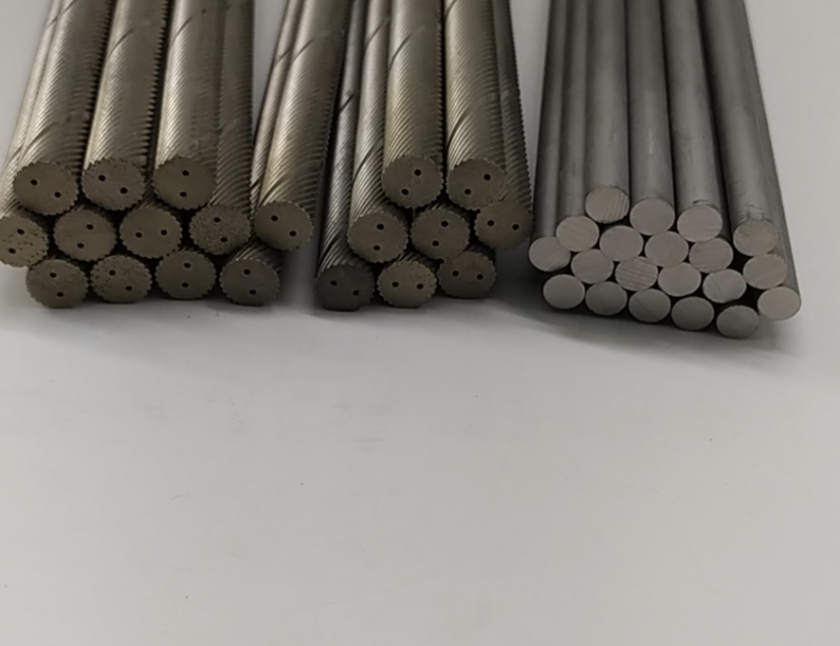
Herramientas de minería geológica
Las herramientas de minería geológica también son un uso importante del carburo cementado. El carburo cementado para minería en China representa alrededor de 25% de la producción total de carburo cementado. Se utiliza principalmente para brocas para perforación de impacto, brocas para exploración geológica, perforadoras de fondo para minas y campos petroleros, perforadoras de rodillos, picas cortadoras de carbón, perforadoras de impacto para la industria de materiales de construcción, etc.
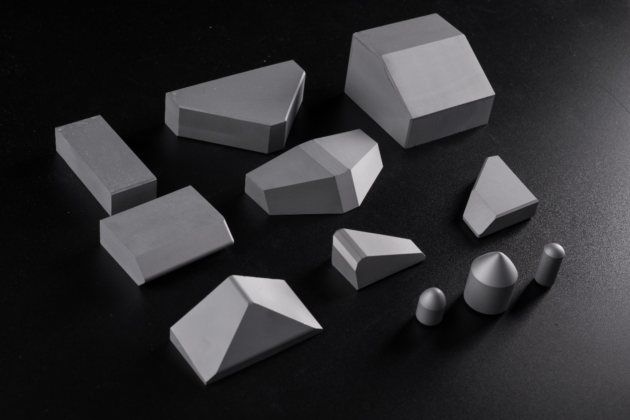
Moldes
El carburo cementado utilizado como diversos moldes representa alrededor del 8% de la producción total de carburo cementado, incluidos los troqueles de trefilado, troqueles de estampación en frío, troqueles de extrusión en frío, troqueles de extrusión en caliente, troqueles de forja en caliente, troqueles de formación y mandriles de trefilado, como mandriles, mandriles esféricos, mandriles flotantes, etc. En las últimas décadas, el consumo de varios rodillos de carburo cementado utilizados para laminar materiales de alambre ha aumentado rápidamente, y el carburo cementado utilizado para rodillos en China ha representado 3% de la producción total de carburo cementado .
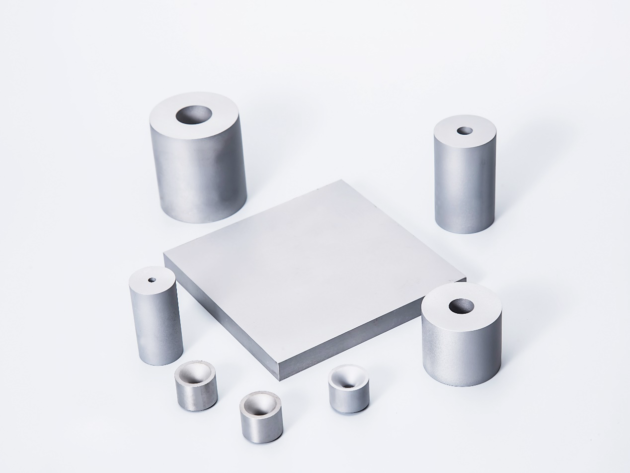
Partes estructurales
hay muchos productos hechos de carburo cementado para piezas estructurales, como anillos de sello giratorios, pistones de compresores, mandriles de torno, husillos de rectificadoras, muñones de cojinetes, etc.
Piezas resistentes al desgaste
Las piezas resistentes al desgaste hechas de carburo cementado incluyen boquillas, rieles guía, émbolos, bolas, clavos antideslizantes para neumáticos, placas para palas de nieve, etc.
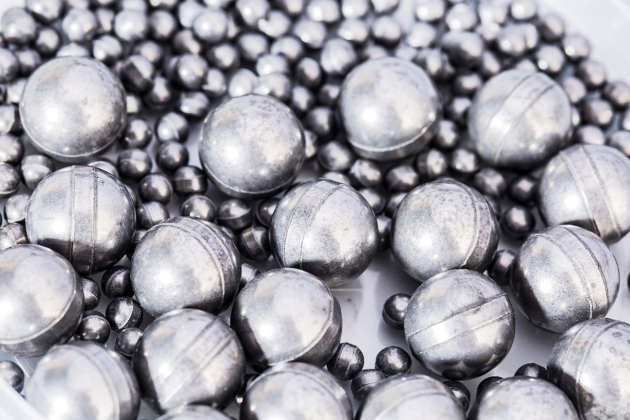
Cavity for high pressure and high temperature resistance
the most important use is to produce top hammer, cylinder and other products for synthetic diamond. Cemented carbide for top hammer and cylinder has accounted for 9% of the total cemented carbide production in China.
Otros usos
El carburo cementado se usa cada vez más y se ha expandido en el campo civil en los últimos años, como la cadena de reloj, la caja del reloj, la cabeza de la cremallera del equipaje de alta calidad, la marca comercial de carburo cementado, etc.
